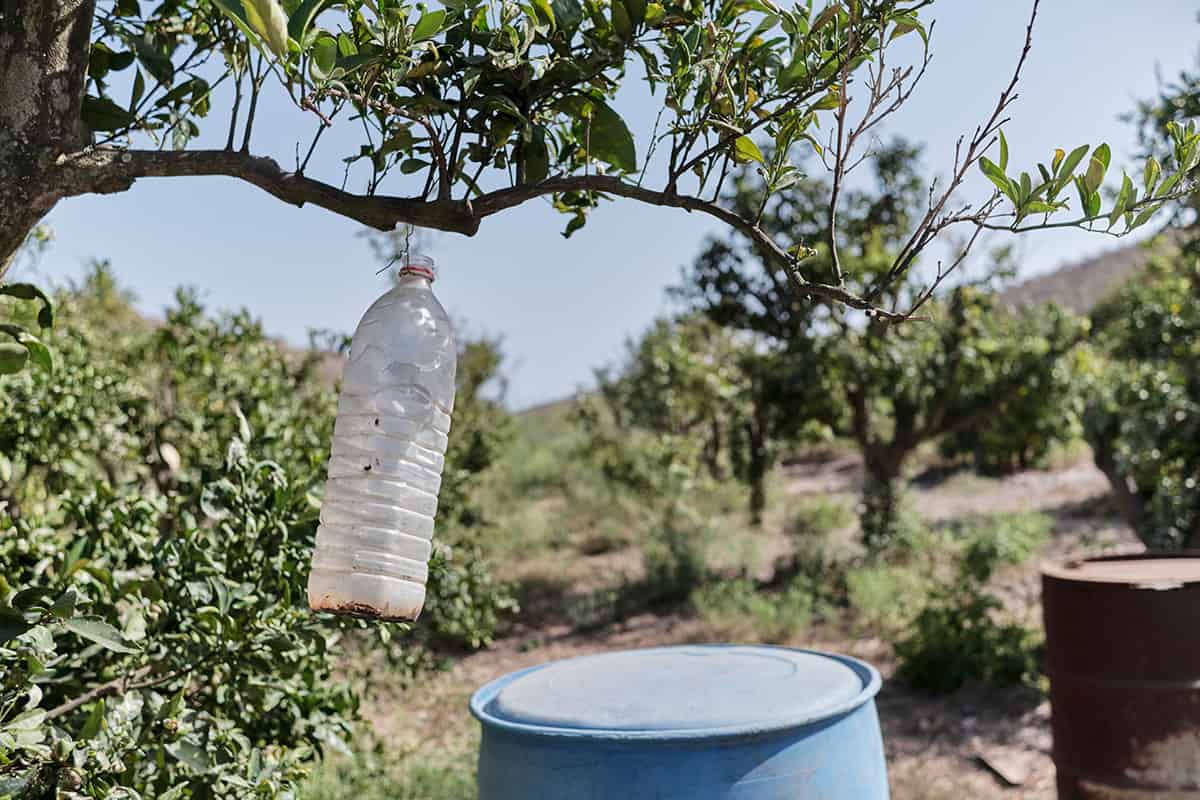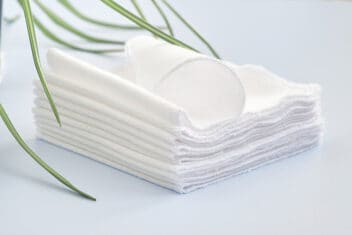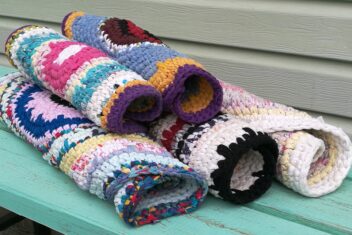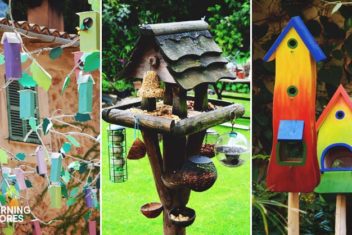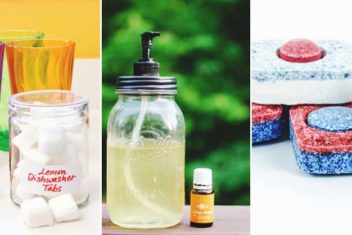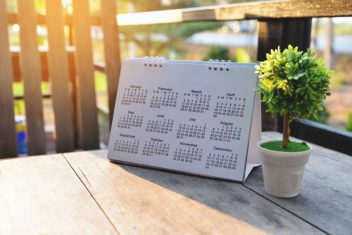I don’t know about you, but I absolutely hate flies. Especially the big, fat, slow-moving ones that love to buzz around the back of my head. If you despise them too, then you’re in luck! Read on to learn how you can make a super-easy, effective fly trap out of an empty soda bottle.
How Does This Fly Trap Work?
Flies aren’t too bright. That’s probably apparent, considering how they just sort of bob around like droning idiots in all directions. Thanks to their – erm – lack of intelligence, when you create a fly trap with a narrow opening, they can’t figure out how to escape from it.
This trap works by using a tasty bait inside it to lure the flies in. Then, once inside, they get trapped one of two ways. Either they can’t navigate their way out (as mentioned), or their wings get wet, preventing them from being able to fly.
What You’ll Need:
In all likelihood, you already have everything you need to make one of these traps at home. If not, you won’t need to spend more than a few dollars to equip yourself.
- An empty, clean soda bottle (any size will do: use a 16 ounce bottle for a small trap, or a huge 2 liter bottle if you get a ton of flies in your space)
- Permanent marker
- Sharp knife
- Masking tape (optional)
- Duct tape
- Hole puncher (or just use that sharp knife)
- Twine or wire to hang it up
- Water
- Bait to lure the flies
- Fruit-scented dish soap (optional)
About That Bait…
Now, when it comes to bait, you have a few different options.
Most flies are drawn to food items that have a strong, sweet-ish scent. This is why you’re likely to find them crawling all over fruity desserts, as well as on meat dishes. As a result, you can choose what kind of bait you’d like to set your trap with.
Traps that use meat are usually really effective but will also start to smell quite disgusting after a few days. This is especially true in summertime. In contrast, fruit-based bait works really well and is a bit less likely to make you gag every time you pass by. I used quartered oranges in mine, and those work effectively.
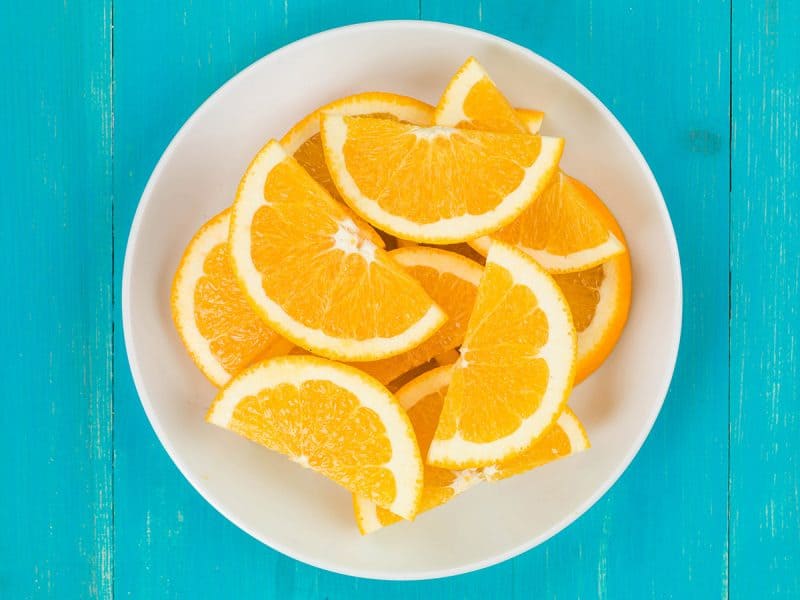
In terms of the soap option mentioned above, that’s used to break the surface tension on the water. In simplest terms, it makes it easier for the flies to fall in and drown, rather than just frolicking around in there.
Since dish soap tends to be strongly scented, it can repel insects instead of attracting them. The way to counteract this effect is to use a dish soap that smells fruity. I use a few drops of tangerine or other non-lemony, citrus-scented soap in my traps, and it works just fine.
How to Make Your Fly Trap
Once you’re ready to make the trap, clear off space where you can work. Since you’ll be using a permanent marker and sharp knives, I recommend putting down either a cutting board or some cardboard to work on. It’s a lot easier to take a couple of minutes to prepare the surface first than it is to scrub Sharpie off the table later. Voice of experience speaking, here…
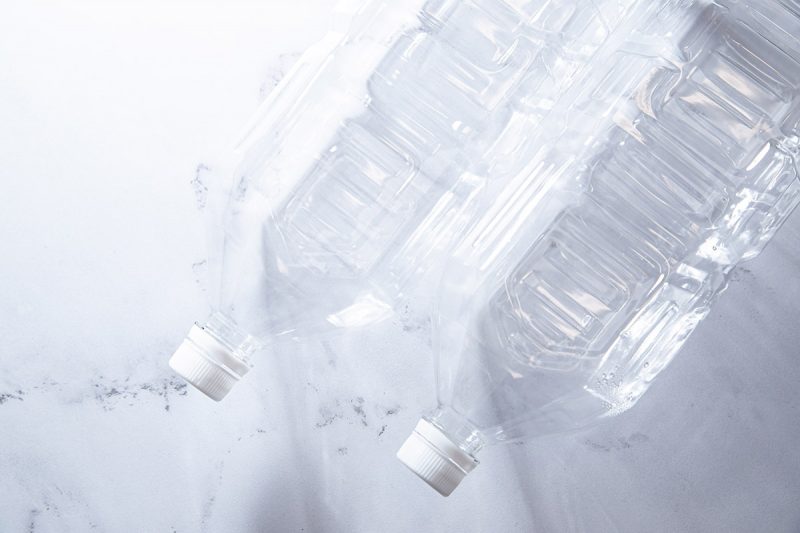
Step 1: Make Your Mark
Hunker down with that empty soda bottle and permanent marker. Create a line a couple of inches below the bottle’s shoulder, a bit lower than the spot where it starts to taper out.
If you feel that you’re a bit wobbly when drawing, wrap some masking tape around the bottle. Then use the tape’s edge as a guideline, and run the marker tip around it a few times. Remove the masking tape once you’re done.
Step 2: Remove the Top
Next, take that sharp knife and cut all the way around this line. You can use a serrated or straight knife for this, though I’ve found that an X-acto or utility blade works best. If you have a hard time cutting through, heat the blade slightly over a flame. It’ll melt the plastic as you work, allowing the blade to slice through more easily.
You’ll now have two pieces to work with: the tube-like bottom portion, and the bottle top.
Step 3: Add the Fly Trap Bait
Put the fruit or other bait into the bottle’s bottom portion. Then add enough water to cover it about 2/3 of the way. There should be enough fragrant fruit sticking out of the liquid to draw the flies in.
After you’ve added the water, add two to three drops of dish soap into the liquid. This will be just enough to break the aforementioned surface tension, without adding too much scent.
Step 4: Put the Top in to Create a Funnel
Flip the bottle top upside down so it looks like a funnel. Basically, the bottle mouth should be aiming downwards towards the tasty bait inside.
Line up the bottom edge of that piece with the top rim of the bottom half. Then cut some pieces of duct tape and secure these together. Plastic often warps when exposed to heat and direct sunshine, so by securing these pieces together, the funnel top won’t drop into the bait section.
Step 5: Attach the Twine or Wire
Take your hole punch (or sharp knife end) and punch a hole into one side of the bottle. This can either go through the duct tape or beneath it. You’re just aiming to punch through both layers of plastic so you can run the twine or wire through it.
Once that’s done, make another hole just like it, directly opposite. This way, it won’t wobble all over the place when you hang it up.
Next, grab that twine or wire and measure out at least a foot length of it. Feed one end of it through the first hole. Then, either create a big knot or feed some of it back so you can secure it tightly. Then repeat this process through the opposite hole too. If you want this really secure, place some duct tape over and around this area as well, just to reinforce it.
Step 6: Hang Up that Fly Trap!
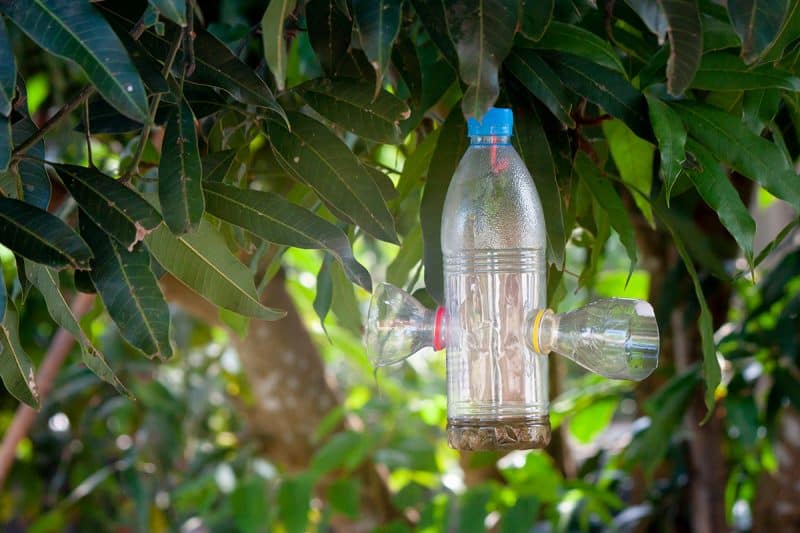
Choose a place where those repugnant flies like to bumble around and hang up your trap. If they tend to congregate around the kitchen, you may want to hang the trap someone unobtrusive so it doesn’t draw too much attention. I have a small one hanging in the space between my fridge and pantry, which I change a couple of times a week.
Other great places to hang these traps are bathroom corners and near doorways or windows where flies may gain egress. If you have pets that use litter boxes or live in hutches, hang some of these traps near them as well. They can help to keep flies off your animal companions, as well as their food.
You can also use them anywhere in the garden where you don’t want flies, like pastures and around fruit trees.
Be Prepared!
If you tend to get a lot of flies in your place, this bottle fly trap is going to fill up with dead fly bodies pretty quickly. Furthermore, whatever bait you used is going to start to smell funky after a few days.
I recommend making a few of these traps at a time, minus the bait, and just keep them in a cupboard until you need them. Then you can poke some fruit, juice, sugar water, and/or dish soap through the funnel top when you’re ready to use it.
Additionally, this type of fly trap seems to pull double duty to catch wasps as well. In fact, I use larger soda bottle traps specifically to catch and kill wasps around my balcony. If you’re going to bait your fly trap for wasps as well as flies, use grapes or figs. These fruits work remarkably well for drawing the buzzing jerks in.
Either way, be sure to check your traps every few days. Dispose of them once the corpses start to accumulate, and put up fresh traps as needed. Before you know it, your home or barn will soon have significantly fewer flies than it does right now!
Other Options
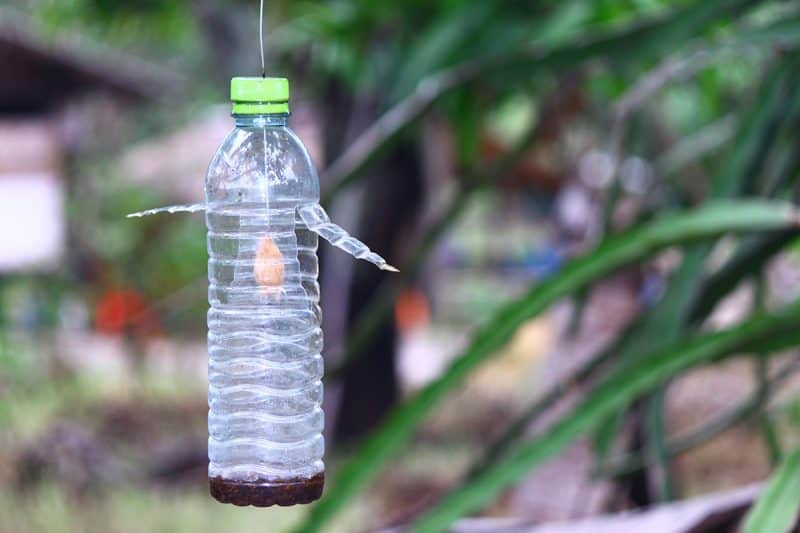
While this method is simple and effective, you can also fill a bottle with some sort of sweet liquid like apple juice and simply hang it up with the cap left off. You likely won’t catch as many insects, but it’s a good option if you’re short on time.
I’ve also seen traps where people cut the tops off two bottles and then cut two holes in the sides of a bottle, right around the middle. Stick the tops with the cap side into the holes and fill the bottom with the trap liquid.
Another option is to cut little flaps out of the side of the bottle to allow the insects in. Don’t make the flaps too large, or the bugs will just head right back out again.
